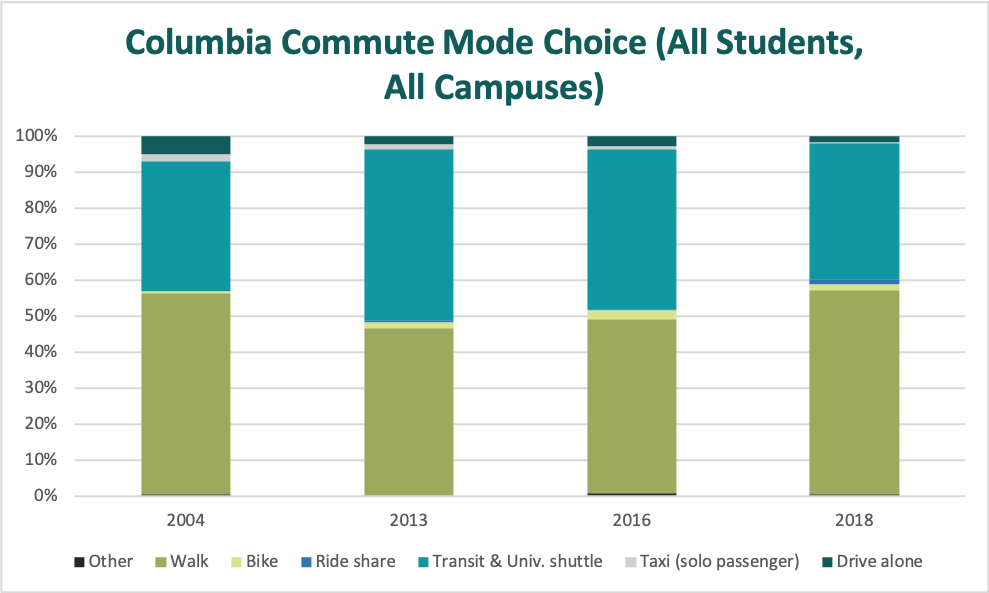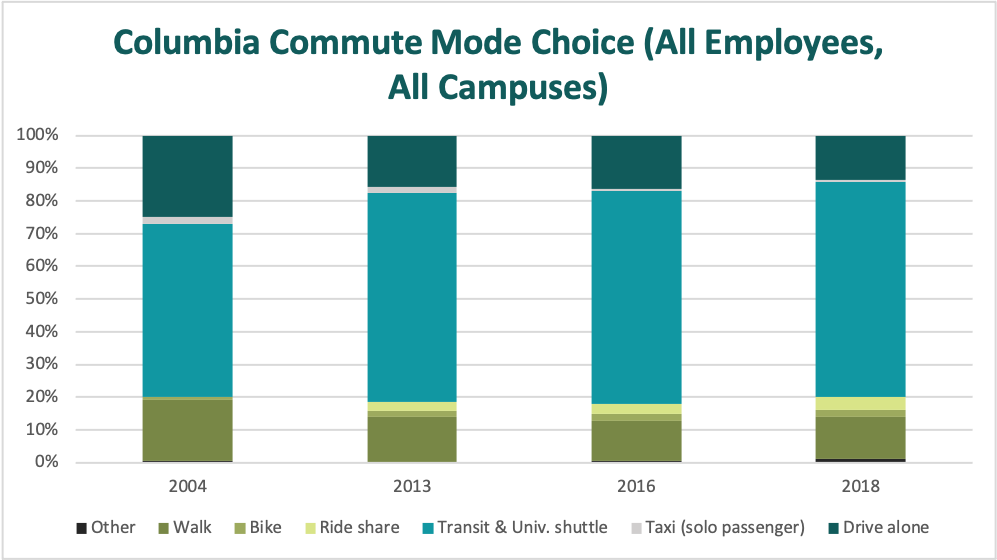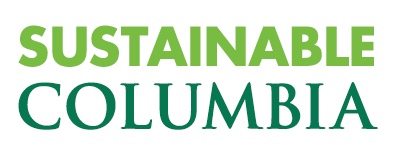Commuter Emissions and Sustainable Commute Modes
Columbia commits to reduce drive-alone commuters and grow car-free connections to campus.
Transportation Commitment Areas
Overview
Columbia’s location in New York City offers access to a compressive and rapid transit system. The University has also significantly invested in nearby housing for students and faculty. These factors, among others, allow the University to boast an incredibly low and ever-decreasing drive-alone commute rate. This downward trend is due in part to the University’s transportation demand management (TDM) program, which aims to allow for continued work and study with a growing campus, with an eye toward reducing cars from commuting to campus, reducing congestion, and improving air quality in the Morningside Heights community. The University continually works with local, state, and city officials to improve bikeability and provide alternatives to driving for students and employees. The University has already made great strides in this area, but continues to set aggressive reduction targets around emissions from commuting to actively improve the air quality of the surrounding community and to set an example as a climate leader for other businesses in the New York Metro area.
Reduce Columbia's commute associated greenhouse gas (GHG) emissions and eliminate single occupancy vehicles (SOV) commuting to campus.
Interim goal: Reduce the percent of Columbia members choosing a drive-alone commute to below 8% employees and 0.5% students by 2030, and near to zero by 2040.
- Accelerate the adoption of Columbia’s Flexible Working Arrangement (FWA) policy to reduce commute trips and demand during peak travel periods by 2021.
- Add additional electric vehicle (EV) charging ports in University parking garages. Create a plan for expansion by 2023.
- Offset emissions that cannot be reduced. Identify projects and credits that meet Columbia’s offset criteria, finalized in 2021.
Improve access to Columbia, allowing for growth without adding pressure to parking and traffic congestion by adopting safe and sustainable mobility options that lead by example and contribute to the livability of NYC.
- Make facilities and programming improvements to further encourage and enable safe pedestrian and bicycle travel to campus, such as through added bike parking.
- Increase carpool/vanpool incentives.
- Grow car-free connections to campus, such as through expanded bike lanes and pedestrian safety enhancements in partnership with the city/state.
- Adjust parking policies and pricing to incentivize a commute mode shift to sustainable options by 2023.
Prior to 2018, there was little centrally-tracked data around commute emissions. Central to the University’s transportation goals in the first sustainability plan was the tracking and reporting of data that would enable the University to get a more accurate picture of its overall emissions, including Scope 3. As a result of that work, the University is now able to report figures and draw graphs like those that follow:
As of 2019, commute emissions account for almost 10% of University emissions (Morningside+, Columbia University Irving Medical Center (CUIMC) and Lamont-Doherty Earth Observatory (LDEO)).


CUIMC is aligned with all stated goals and strategies in this section.
LDEO is aligned with all stated goals and strategies in this section.
